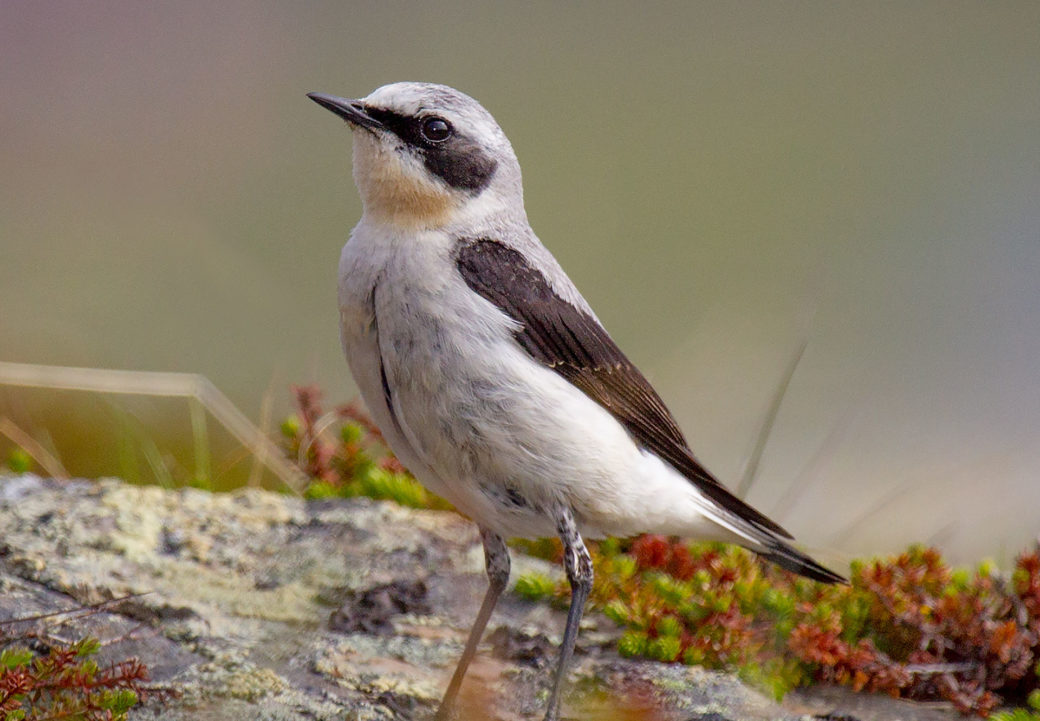
Photo credit: N. Wheatear by Andreas Trepte - https://commons.wikimedia.org/w/index.php?curid=36921449
Today is Migratory Bird Day. According to the U.S. Fish and Wildlife Service, World Migratory Bird Day “celebrates the migration of hundreds of bird species between their summer nesting habitats in North America and wintering grounds in Latin America, Mexico, and the Caribbean.”
Unfortunately, the Wildlife Service has overlooked a small but noteworthy migrator, the Northern Wheatear, who happens to be my favorite. While my bird does indeed nest in North America, it migrates all the way from Alaska to Africa and back again. The Northern Wheatear holds the world’s record for the longest migration route of any songbird.
Granted, the Wheatear may not look like a champion. It’s a tiny bird, smaller than a sparrow, weighing little more than two teaspoons of sugar. Nor is it flashy by bird standards, just greyish tan feathers, a black eye-stripe, and a white rump. (“Wheatear” is an Old English phrase meaning “white arse.”) But none of that detracts from the Wheatear’s preeminence. This little bird can fly, wingbeat by wingbeat, halfway around the world, from Alaska’s tundra to Africa’s savannah for a round trip of 18,000 miles. By comparison, flying from Canada to the Caribbean is a lark.
Wheatears are industrious time managers. Due to the distance, the Wheatear’s flight schedule takes up almost half the year. During Alaska’s brief arctic summer, they raise two sets of hatchlings before departure. After the first eggs are hatched, and the first chicks fledged, a second nest is laid, hatched, and fledged again. Wheatears race against the winter to raise the chicks, preen the feathers, and stuff the gizzards all before August when the Arctic starts to freeze. Africa’s balmy savannahs are 9,000-miles and three-months away. Powering up for such a journey demands constant foraging on insects and berries.
It is undisputed that Wheatear chicks are born with the wherewithal to navigate between Alaska and Africa. Yet how exactly they find their way, halfway around the world, is a complete mystery. Nor does anyone know how a bird weighing less than an ounce can maintain enough thrust to fly that far. Also unknown is why they fly to Africa and not Central America like all the other birds.
Nevertheless, sometime in August, just after sunset, they all take flight over the Bering Sea to Siberia. Reaching Siberia, they bank southeast navigating over ice, water, mountains, and deserts. They fly throughout the night. They cruise over Russia, Kazakhstan, the Caspian Sea, Iran, and Iraq. They cross the Arabian Desert and then the Red Sea to Africa. Passing by Egypt and over Sudan, they wing over Ethiopia. Finally, by November, they arrive in East Africa where individuals fan out to their favored tropical resorts in Uganda, Kenya, and Northern Tanzania.
In the African savannah, Wheatears continue their energetic and loquacious habits. They hop about the ground with tails flitting while pecking at bugs and grubs and berries. They fill the air with whistles, squeaks, chats, and warbles. Perhaps they are bragging about how far they have flown. If so, they certainly have that right.
Wil Smith
